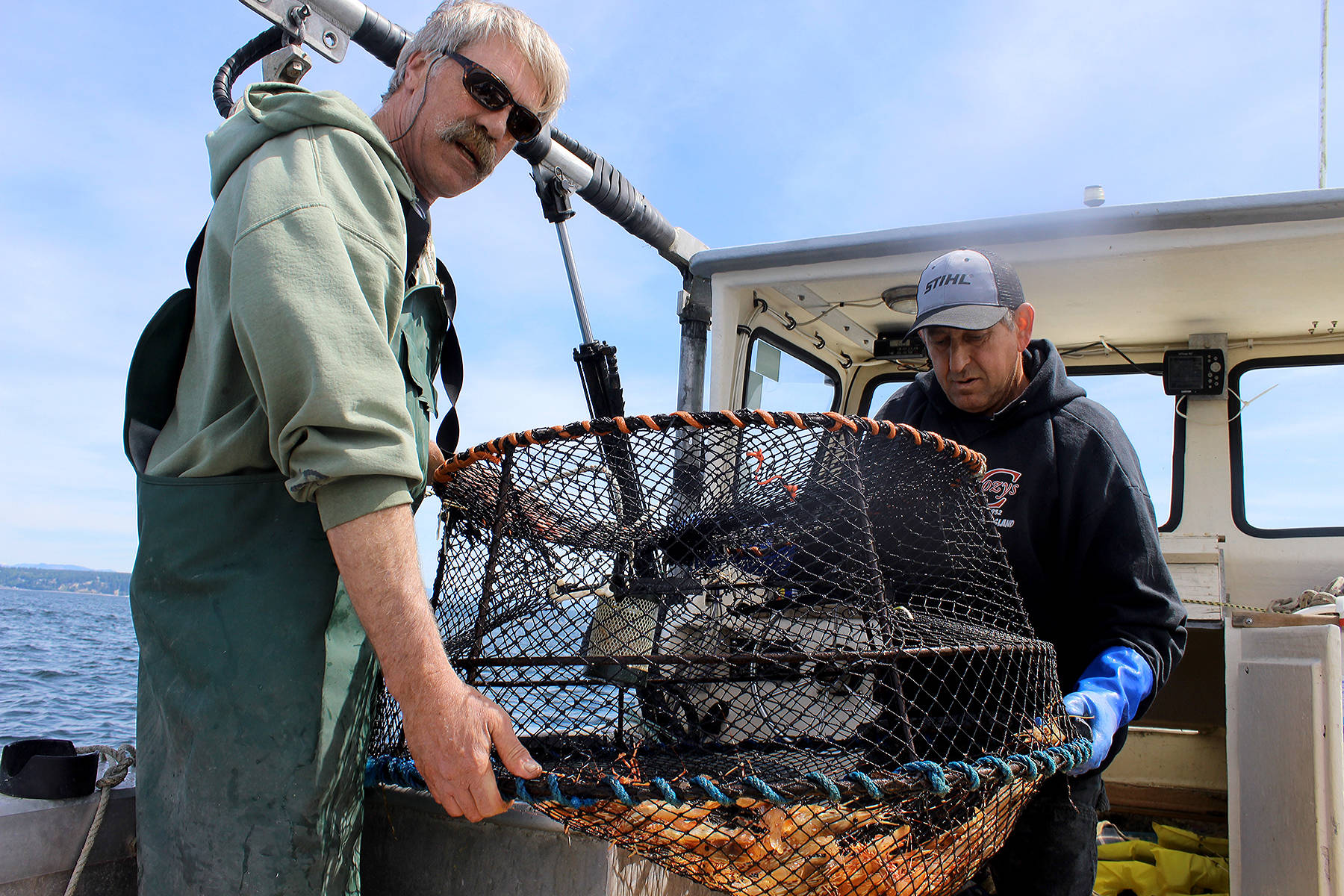Whidbey’s recreational shrimp season is mighty skimpy.
In fact, it’s already over.
From 7 a.m. to 1 p.m. on May 11 and May 15, licensed shellfish harvesters had 12 hours over two days to fill up their quota of spot shrimp, the most popular and largest of three shrimp species in Puget Sound.
“We don’t know why it’s only two days,” lamented John Norris of Clinton as he readied to go out with his friend Dean Meranto on the season’s last day, Wednesday. He had to miss the first day to go to a Saturday wedding — his own.
“Spot shrimp are like the cockroaches of the sea,” Norris declared. “They’re everywhere.”
But history shows that over fishing for shrimp can disrupt reproduction, leading to shrunken shrimp populations. In the 1970s, spot shrimp were over-harvested in Hood Canal and it took years for them to recover, said Washington Department of Fish and Wildlife biologist Donald E. Velasquez.
“The larger shrimp are the females, the egg producers, and they are the ones people want to keep and eat,” he said. “But they have to able to successfully reproduce.”
Also known as prawns, spot shrimp can grow up to nine inches in length.
State officials said they’ll be no additional spot shrimping days this year for the Whidbey Island Marine areas 8-1 (Saratoga Passage), 8-2 (east of Clinton) and 9 (Admiralty Inlet.)
That’s because local waters were awash in boats, buoys and traps on the two legal days of shrimping.
“Saturday had ideal conditions,” Velasquez said. “We counted over 2,000 buoys. That’s a huge count.”
That translates to about 600 boats. The daily limit for spot shrimp is 80 prawns per person.
Wednesday, about 1,500 traps were counted in Marine Areas 8-1 and 8-2. About 840 pots were counted on both days in Marine Area 9. Tides, timing, lines, luck and cat food all play a part in how much shrimp can be scooped up in the tiny allotted time slot.
“We pull every hour and we rotate them throughout the day,” Meranto said as he steered his 26-foot fishing boat toward a “sweet spot for a pot’” off Langley’s Sandy Point.
“We’ve already had four friends aboard come and gone already this morning,” Meranto added. “We had some good pulls. They went home happy.”
Norris, his bridegroom buddy and pot-puller, opened another can of cat food to mush into the mesh-wire bait tube. “Friskies Pate, that’s what they like,” he said, grinning. “It leaves a scent, it’s like a chum trail.”
But as the tide headed out and the hours slipped toward quitting time, few spots were in the pots.
“The tribes, they were here for two weeks, took all the shrimp and we’re here with no shrimp,” Meranto muttered. “I don’t get it.”
This year, 38,000 pounds was the limit for Marine Area 8-1 and 8-2; half of which is allocated to native tribes. The 19,000 pounds left for non-tribal recreational shrimp seekers was further reduced to 16,768 pounds because of overharvesting the previous year.
“We always get complaints about the short seasons,” Velasquez said. “But the simple fact is by federal court order we have to manage the shrimp with a 50/50 split.”
Among the reasons for the shrinking shrimp is demand, the region’s growth spurt and a change in fishing habits.
“Back in the day, a lot of the sectors we were counting for spot shrimp had 10 buoys or less, and now that almost never happens,” said Velasquez, who specializes in crustaceans. “Salmon seasons were stronger back then so finfish is what people pursued.”
When salmon dried up, people tried their luck looking for bug-eyed shrimp that like to hang out at a depth of 200 to 300 feet below the surface.
The too-few shrimping days leads to adults calling in sick and kids playing hooky.
Eric Keyser loaded up his three kids in his boat and set off from the Everett harbor early Wednesday morning heading to favorite shrimp spots between Camano and Whidbey Islands. A stuffed cooler revealed it was a good day to skip work and school.
“We’ve been doing this since we were little,” said 13-year-old Brighton Keyser. “We used to be the pot pullers but now it’s motorized so we don’t hurt at the end of the day.”
Up next is crab season, which typically opens in early July. But unlike scrimped shrimp season, the crab collection calendar extends for months, sometimes lasting until the last day of the year.



